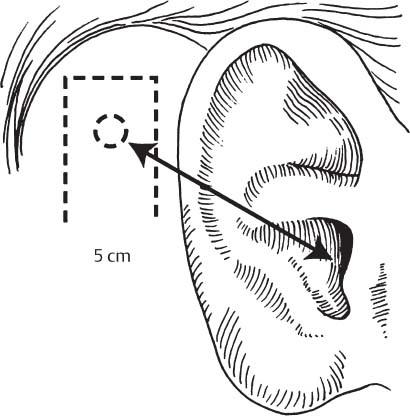27
Otologic Implants
Elizabeth H. Toh
This chapter discusses the surgical technique for placement of cochlear and boneanchored hearing implants. Although middle ear implants are currently available for rehabilitation of mild to severe sensorineural hearing loss, the superiority of existing conventional hearing aid technology has resulted in limited interest in these implants as a reliable option for hearing rehabilitation.
- External sound processor: digital ear-level (Divino) and body-level (Cordelle) devices are available (Baha System, Cochlear Americas, Denver, CO)
- Titanium fixture (Baha System, Cochlear Americas, Denver, CO)
- Conductive or mixed hearing loss in patients unable to use conventional aids due to atretic or extremely stenotic external auditory canals, draining tympanic membrane perforations or mastoid cavities, or dermatologic problems of the external canal, and who cannot or will not undergo surgical correction
- Single-sided deafness not amenable to rehabilitation using a conventional aid in the affected ear
- For either indication, a word recognition score better than 60%, and stable bone average pure tone thresholds in either ear of at least 45 dB or less for the ear-level processor and 60 dB or less for the body-level processor
- In patients with bilateral atresia, bilateral bone-anchored hearing aids (BAHAs) offer improved sound localization and hearing in noise.
- In all patients, the BAHA simulator (test band or test rod with attached BAHA) should be offered for trial prior to proceeding with surgery so as to ensure appropriate hearing expectations.
- The option for use of a bone-conducting hearing aid in atretic ears and a contralateral routing of signal or bilateral contralateral routing of signal (CROS/BICROS) device in single-sided deafness should be offered.
- Any dermatologic conditions involving the postauricular skin on the surgical side should be treated and cleared prior to surgery to minimize the risk of implant infection postoperatively.




